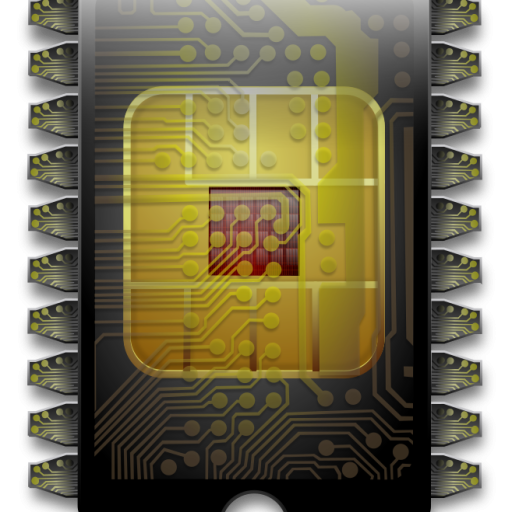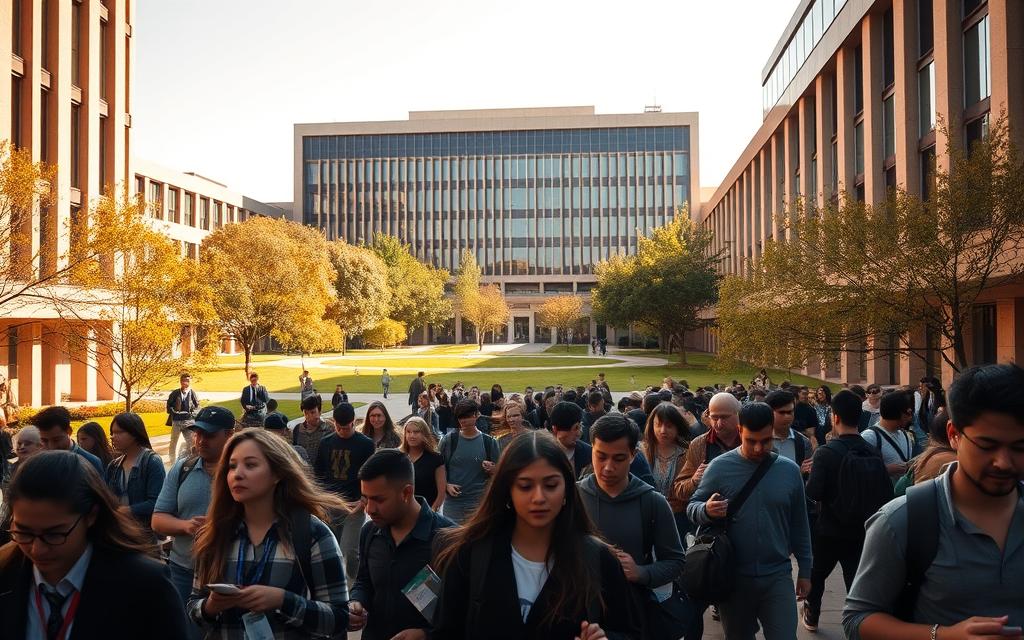Getting into prestigious STEM-focused institutions like Stevens Institute of Technology requires hard work. This university is known for its industry-aligned programmes and its close location to New York City’s innovation centers. It attracts students from all over the world who are eager to learn and grow.
Stevens has a 12:1 student-faculty ratio and works with over 300 companies. This means students get a lot of hands-on learning experience. The university’s 99% graduate employment rate shows it’s serious about helping students find jobs. Plus, its 160% return on investment (ROI) makes it one of the top-value technical universities in the US.
Applicants should know that getting into Stevens is tough. The exact numbers change every year, but you need to show you’re good at maths and sciences. The university looks for students who can solve real-world problems creatively and technically.
Stevens balances tough classes with real-world experience. It prepares students for fast-paced fields like artificial intelligence and sustainable engineering. For those interested in cutting-edge research and urban career opportunities, Stevens is a great choice. But, it’s important to understand its selective admissions process.
Stevens Institute of Technology Admissions Overview
Understanding admissions trends helps prospective students gauge their chances realistically. Recent data reveals how Stevens compares to peer institutions and highlights evolving competitiveness in technical education.
Key Statistics and Acceptance Rates
Stevens’ admissions landscape combines stable applicant numbers with increasing selectivity. Let’s examine the figures shaping its current profile.
2023 First-Year Applicant Numbers
Last year saw over 12,500 applications for undergraduate programmes. This shows consistent interest, even with pandemic-related fluctuations. Stevens attracts candidates with its specialised engineering and computer science offerings.
- 2021: 46% acceptance rate
- 2022: 43.4% acceptance rate
- 2023: 40% acceptance rate
This downward trend reflects Stevens’ growing reputation among STEM-focused applicants. Admissions officers now prioritise candidates demonstrating both academic excellence and practical project experience.
Comparison With Similar Technical Universities
When evaluating technical university comparisons, Stevens occupies a distinctive position:
| Institution | Acceptance Rate | Average SAT | U.S. News Ranking |
|---|---|---|---|
| Stevens Institute | 40% | 1390 | #76 National |
| Rensselaer Polytech | 43% | 1428 | #51 National |
| Worcester Polytech | 48% | 1375 | #82 National |
This comparison shows Stevens maintains higher selectivity than WPI while being more accessible than RPI. Its mid-range SAT scores suggest balanced consideration of academic talent.
Understanding Stevens’ Admissions Requirements
Stevens Institute of Technology sets high academic standards. This is to prepare students well for STEM fields. Students need to show strong skills in their secondary education, focusing on subjects related to their majors.
Academic Preparation Expectations
The university looks for students who have consistently done well in tough classes. This focus on excellence is at the heart of Stevens’ admissions.
STEM Course Requirements
All applicants must have four years each of mathematics and laboratory science. For those aiming for engineering, the usual subjects include:
- Algebra I & II
- Geometry/Trigonometry
- Calculus (preferred)
- Physics and Chemistry

Students aiming high often take AP courses. The table below shows good choices for different majors:
| Intended Major | Essential AP Courses | Complementary Options |
|---|---|---|
| Engineering | Calculus BC, Physics C | Computer Science A, Statistics |
| Computer Science | Computer Science Principles | Calculus AB, Physics 1 |
| Natural Sciences | Chemistry, Biology | Environmental Science, Calculus AB |
Portfolio Requirements for Design Programmes
Those applying to Visual Arts & Technology need to submit a curated portfolio. It should show:
- Technical skills in digital media
- Creative problem-solving
- 3-5 projects with detailed process
Good portfolios for design often have interactive prototypes and user experience maps. They also show evidence of design thinking.
Is Stevens Institute of Technology Highly Competitive?
Stevens Institute of Technology has an acceptance rate of 40–50%. This makes it neither very selective nor very open. But, the real story changes with each department and group of applicants. Key factors include how popular the programmes are, when people apply, and how diverse the students are.
Factors Influencing Admission Difficulty
Programme-Specific Competition Levels
Computer science and mechanical engineering get 3 times more applications than humanities. Graduate programmes in new fields face even more competition.
- Cybersecurity: 18:1 applicant-to-seat ratio
- Data Science: 22% year-on-year application growth
- AI Specialisations: 65% of admits hold prior research experience
Stevens has a 90% internship placement rate. This makes degrees in STEM fields very sought after. The school’s partnerships with big companies help STEM students a lot.
Impact of Early Decision Applications
Early Decision (ED) applicants have a 15–20% higher chance of getting in than Regular Decision ones. This shows Stevens wants a dedicated group of students.
- ED I Deadline: 15 November
- ED II Deadline: 15 January
- ED Acceptance Rate: 53% (vs 41% Regular Decision)
Choosing ED means you’re really committed. But, think carefully if you need financial aid.
Geographic Diversity Considerations
Even though 38% of undergrads are from New Jersey, Stevens looks for students from all over. The school wants a diverse campus. Here’s what the latest numbers show:
- Mid-Atlantic States: 52%
- New England: 18%
- West/South: 25%
- International: 5%
Admissions officers look for students who add to the campus’s diversity. This doesn’t mean local students are left out. It’s about bringing in different viewpoints.
Strategies to Strengthen Your Application
Stevens Institute of Technology has an acceptance rate of about 53%. To stand out, you need more than good grades. Here are three ways to make your application shine.
Academic Enhancement Approaches
Top students show they’re curious beyond regular schoolwork. These activities not only improve your skills but also show you fit with Stevens’ focus on innovation.
STEM Competition Participation
Entering top competitions proves your technical skills. Admissions teams look for:
- FIRST Robotics: Shows teamwork and problem-solving
- Regeneron STS: Highlights your research skills
- Intel ISEF: Shows your scientific creativity
“We seek students who excel in challenging settings. Competitions often predict success in our innovation ecosystem.”

Stevens offers pre-university summer programmes for real campus life. The 4-week Introduction to Engineering Design course lets you:
- Use industry-standard CAD software
- Work on real engineering projects
- Get college credits from Stevens
Other great options include MIT’s Minority Introduction to Engineering and Science (MITES). It boosts your application with advanced projects.
Dual Enrollment Opportunities
Taking college-level courses shows you’re ready for more. Choose subjects that match Stevens’ first-year classes:
| Course | Credit Transfer | Strategic Value |
|---|---|---|
| Multivariable Calculus | 90% | Helps you finish your degree faster |
| Engineering Mechanics | 75% | Shows you’re ready for technical work |
| Computer Science Principles | 100% | Confirms your coding abilities |
These dual enrolment benefits do more than just give you credits. They show you can handle university-level STEM work. For more tips, check out our guide to navigating Stevens’ competitive admissions.
Conclusion
Getting into Stevens Institute of Technology needs careful planning. It’s all about academic excellence and technical skills. With an average SAT score of 1438, students must show they’re top-notch in their studies.
It’s not just about grades. Showing off skills in STEM fields is key. Stevens is selective, but it’s worth it for those who are ready.
A good application at Stevens shows off grades and innovation. Projects and internships in engineering or computer science are a big plus. This shows you’re serious about your field.
The university’s strong connections with companies like IBM and Pfizer are a big plus. This means students get real-world experience and job opportunities.
Applicants should see the application as a chance to show they’re a good fit for Stevens. By combining great grades with a passion for innovation, students stand out. They show they’re ready for the challenges of a tech-focused university.







